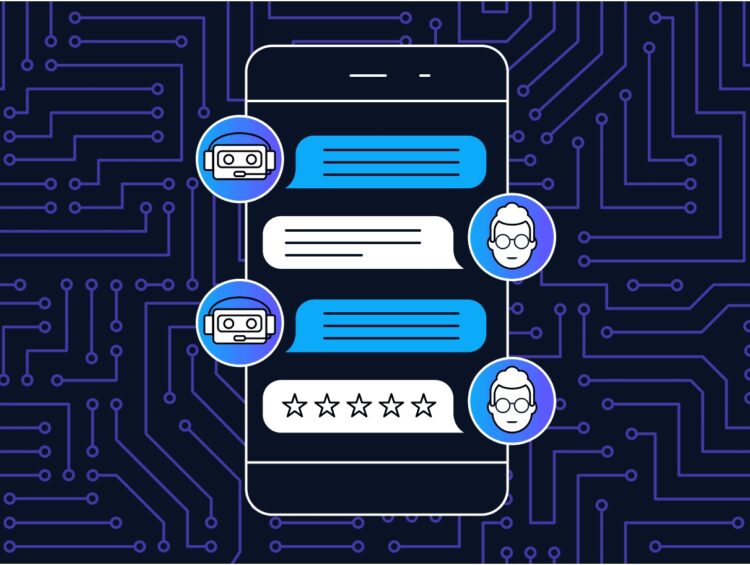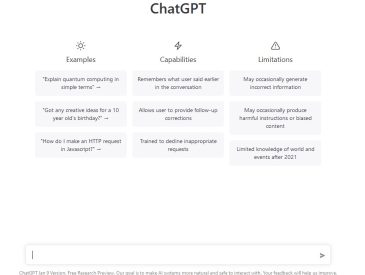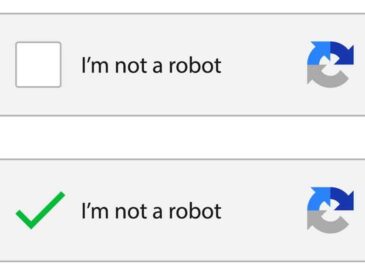There are several advantages of AI based chatbots. They can handle a broad range of tasks such as answering customer support queries, delivering information or simply answering questions. A good AI based chatbot can be programmed to understand the nuances of human conversations, and can even be trained to respond to a variety of queries. In this article, we’ll discuss these benefits and how AI can help your business. We’ll also cover the advantages of small talk libraries and NLP.
Natural language processing
When developing a chatbot, the AI NLP algorithms should have the ability to translate human language into organized data. These algorithms should extract the meaning of the user’s message and collect the relevant information from the conversation. The branches of natural language processing are natural language understanding and machine learning. This approach allows chatbots to learn from conversations and become more effective. It can also be used to create a conversational experience in a variety of languages.
The most common questions for banks are related to account status, refund status, card associated queries, and balance enquiry. While these chatbots can provide the answers to these questions, they are not powerful enough to handle the complexities of customer queries. In addition to identifying customer requests, AI based chatbots use natural language processing to determine their sentiments. Ultimately, NLP can be used to help businesses reduce their customer service costs and improve their customer service.
NLP algorithms have many uses. For example, you can automatically classify Gmail emails by reading the subject lines and associating them with predetermined tags. The more accurate an AI engine is, the more powerful their solutions will be. A great example of a natural language processing chatbot is IBM Watson Assistant. You can even download a free lite version of Watson Assistant to see how well they work with everyday language.
NLP-based chatbots can be effective and convenient, as long as they understand natural language. In fact, some recent studies have even suggested that 68% of consumers prefer conversational chatbots over other forms of communication. Furthermore, NLP chatbots are able to anticipate what customers want or need. With the right training, they can even answer their customers’ questions. It is not surprising that this technology is becoming a popular part of a business’s customer service.
Machine learning
Service-based chatbots trigger actions triggered by commands issued by end users. In other words, users may ask the chatbot “help me find a hotel” or “show me a movie.” This kind of chatbot doesn’t have training data to learn from. Users can simply enter the keywords “XXX” and it will respond accordingly. Machine learning has high implementation potential, but it’s not self-learning.
To create machine-learning chatbots, you need to collect training data, typically manually. In large or medium-sized companies, many inquiries are complex, and the Knowledge Graph approach can provide meaningful answers to queries. It also provides operational relief and automation to employees. If you are considering using machine learning to develop chatbots, be sure to read on for more information. We hope these tips will help you decide between the two approaches.
AI-based chatbots can lower costs and increase customer loyalty and revenue. They have a number of benefits, but they’re not for every business. Before you make the decision to deploy chatbots, do thorough research and discuss pros and cons with your employees. Make sure it fits your business and doesn’t alienate your customers. Remember, the customer experience should always come first. And don’t let the AI dictate how you do business.
There are three common issues with Machine Learning-based chatbots. The most common is the difficulty in establishing a consistent and unbiased conversational system. The training process is extremely specific, so even slight variations won’t be recognized by the bot. The complexity of products and services makes it difficult for bots to learn. That’s why companies need a training process that’s flexible enough to allow them to adapt to their specific needs.
Rules-based chatbots
Rule-based chatbots work on the same general process as human chatbots. They process input and answer questions according to rules or algorithms. They have a limited selection and are the slowest type of chatbots for customer service. They rely on machine learning to become more sophisticated and answer more complex queries. But the main difference between these two types is the level of human interaction required. This article will look at both types of chatbots and how they can benefit your business.
Rule-based chatbots use if-then logic to determine which inbound queries should be answered. In order to achieve this, you must define the language requirements that you want your chatbot to understand. For example, you might want it to be sensitive to the word ‘buy,’ while it should be neutral when it comes to’shopping’. In this case, you want your bot to be able to understand your customers and give them the information they need.
A chatbot that answers questions is more likely to be useful if you can personalize the experience. These bots can help customers with various issues and improve their overall experience. Of course, not all chatbots are created equal. Some are based on rules, while others are built using machine learning. Some companies have even gone as far as using AI-powered chatbots to enhance customer experience. So it’s important to decide which type of chatbot best suits your business.
When you’re ready to deploy a chatbot, consider the type of conversations you want it to conduct. Can it be a business-to-business chatbot? It’s possible. And it can also be internal. For example, a chatbot targeting consumers could operate on Facebook messenger, a company website portal, or MS Teams. And it’s easy to get started using a chatbot with these types of features.
Small talk library
The Small talk library for AI based chatbot developers is a simple but effective feature that boosts user adoption, interaction, and experience. Its implementation took only two weeks and has been a great success for many companies. In addition, it can be used in a variety of scenarios including customer service, marketing, and more. Let’s explore how this library can benefit your organization. Its implementation will help your chatbot handle off-script requests.
The Small Talk library includes over 4,000 questions for your bot to answer, covering the most common queries. It is free and open source, and offers a large number of integration options. You can purchase turnkey integrations for a variety of platforms, and opt for custom pricing if you don’t need a lot of features. It also offers a free course on Udemy for developers to learn the basics of AI chatbot development.
A simple text-to-speech module is also required for building a chatbot. To use this module, you must install a small talk library from Google. The library will save your responses as mp3 files in your file system. Once you have finished the installation, you can start using your new AI chatbot. This feature is particularly useful for building chatbots that interact with other users.
Another AI-powered chatbot is Bold360, which has patented natural language processing technology. It understands the customer’s intention without keyword matching and learns which answers will work best for them. Its AI can interpret complex language and remember context of the entire conversation. It is capable of sending personalized content to customers, asking for feedback, and even making recommendations based on the context of the conversation. Ada has saved companies over $100 million in customer service costs and over 1 billion minutes of customer service time.
Automation features
With AI based chatbots, customer service becomes a breeze. Not only do they help to improve customer service, but they also help to decrease costs and boost overall satisfaction. Here are some of the most important features of AI based chatbots. Automation features allow for easier tracking of goal completion and show overall progress. AI chatbots are now available in many platforms, including Facebook Messenger, Skype, and Twitter.
AI based chatbots have a variety of security features that can help ensure user privacy and security. Authentication and authorization ensure that user identities are verified and permission is granted to perform a task. Some AI chatbots even have self-destructing messages to protect sensitive information. Additionally, a personal scan ensures that users are who they claim to be. Despite these features, businesses should still ensure that they use security measures and training to ensure their AI chatbots are as safe as possible.
An AI chatbot can recognize a variety of human language and can understand open-ended questions. It can also learn from past conversations and adapt its responses accordingly. AI chatbots can process multiple languages and can be trained to read a customer’s mood. They also have a variety of other features, such as the ability to understand emotions and personalize their communication with users. However, some languages are harder to process than others, and chatbots based on purely linguistic models have basic capabilities.
Automated interactions are very valuable for business. Not only do chatbots improve customer experience, they also save costs and enable personalization. Automation features of AI based chatbots are an excellent choice for companies that want to differentiate themselves from competitors. These chatbots also eliminate the need for human interaction. A human-powered business can only serve a limited number of customers at a time, which limits the company’s ability to offer proactive outreach to their customers.






[…] can interact with the chatbot through any channel. This means that they can talk to it over Facebook, WhatsApp, SMS, or Slack. It […]
[…] a conversational-AI bot for your company. If you’re in the market for a high-performance chatbot that will improve your bottom line, look no further than […]
[…] When using a chatbot, businesses can benefit from cost reduction as certain tasks can be automated. Also, using a chatbot helps build trust with customers as they feel like their inquiries are handled professionally and efficiently. More information here Advantages of AI Based Chatbots – Wicked Sciences […]